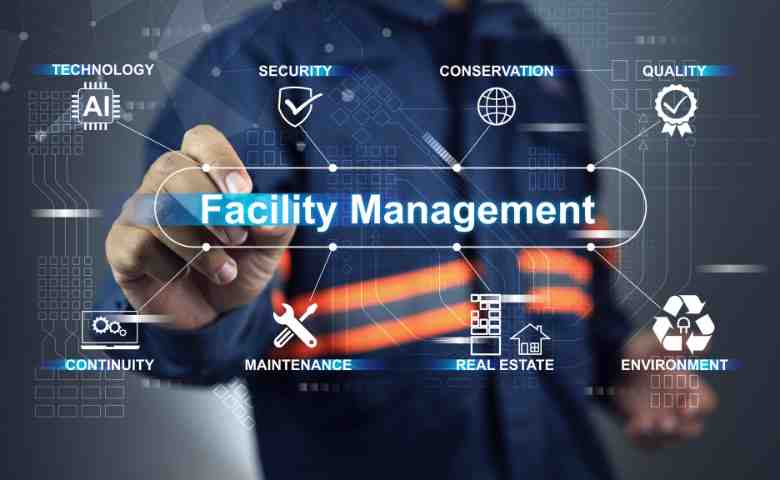Last Updated on February 13, 2025 by Admin
Effective facility management is the backbone of a well-executed construction project. It ensures that resources are used efficiently, workflows remain uninterrupted, and operational setbacks are minimized.
ConstructionCareerHub App is LIVE — built ONLY for construction careers. Don’t apply with a weak resume.
Get ATS-ready Resume Lab + Interview Copilot + Campus Placement Prep (resume screening, skill gaps, interview readiness) — in minutes & Other advanced features.
Explore Smarter Construction Career Tools →Quick check. Big impact. Start now.
A strong management strategy improves coordination between teams, enhances decision-making, and prevents costly disruptions. Clear processes and proactive oversight help maintain quality standards and keep projects on track.
The best practices below provide actionable steps to streamline operations, reduce inefficiencies, and improve overall facility performance. Read on to learn how to maximize efficiency in construction facility management.
Table of Contents
Enhancing Energy Efficiency and Sustainability
Reducing energy consumption improves cost savings and supports environmental responsibility. A well-planned approach helps facility management for construction projects meet sustainability standards while maintaining operational efficiency.
To optimize energy efficiency, consider the following strategies:
- Energy audits: Regular assessments help identify inefficiencies in power usage and uncover opportunities for reducing waste. Analyzing energy consumption patterns allows facility managers to implement targeted improvements, such as upgrading outdated systems or optimizing load distribution.
- Smart building technologies: Automated systems regulate lighting, temperature, and ventilation based on occupancy and real-time conditions. These intelligent controls minimize excess energy use while ensuring a comfortable and productive environment for workers, leading to lower utility costs.
- Sustainable construction materials: Using energy-efficient building materials, such as insulated panels, reflective roofing, and low-emission glass, enhances thermal efficiency. These materials help regulate indoor temperatures, reducing the need for excessive heating or cooling and improving long-term building performance.
- Optimized equipment scheduling: Running heavy machinery and energy-intensive equipment during off-peak hours helps lower electricity costs by taking advantage of reduced energy demand. Coordinating equipment usage with energy-efficient timeframes prevents unnecessary power consumption and extends the lifespan of machinery.
- Renewable energy integration: Installing solar panels, wind turbines, or other renewable energy sources on-site offsets electricity demand and reduces operational costs. These systems provide a sustainable power supply, decrease reliance on fossil fuels, and contribute to long-term energy savings.
Adopting energy-efficient strategies enhances facility operations, lowers expenses, and contributes to a more sustainable construction environment.
Implementing Proactive Maintenance Strategies
Regular maintenance prevents unexpected breakdowns, extends equipment lifespan, and keeps facilities running efficiently. A structured plan minimizes downtime and ensures critical systems remain operational.
To improve maintenance efficiency, consider the following strategies:
- Scheduled inspections: Routine checks help detect wear and potential failures before they cause major disruptions. Inspecting HVAC systems, electrical wiring, and structural components ensures everything remains in working order.
- Predictive maintenance: Advanced sensors and analytics monitor equipment conditions in real-time. Detecting vibrations, temperature changes, or pressure fluctuations helps identify issues before they escalate.
- Inventory management: Keeping a stock of essential spare parts prevents delays in repairs. A well-organized parts inventory avoids shortages and keeps replacements readily available.
- Maintenance logs: Detailed records of repairs and service history help track performance and identify patterns. Reviewing past maintenance data supports informed decisions about upgrades or replacements.
A proactive maintenance plan keeps construction facilities operational and cost-efficient, reducing the risk of unexpected failures and repair expenses.

Strengthening Security and Safety Measures
Maintaining a secure and safe worksite protects workers, equipment, and materials. Strong security measures reduce risks, prevent accidents, and ensure compliance with safety regulations.
To improve worksite security and safety, consider the following measures:
- Emergency response plans: Clear procedures help workers respond effectively to fires, structural issues, and hazardous material spills. Conducting regular safety drills ensures everyone knows their roles during emergencies.
- Security personnel: Trained on-site guards monitor entry points, patrol work areas, and respond to security concerns. Their presence deters unauthorized access and theft, protecting valuable materials and equipment.
- Compliance with building standards: Adhering to local safety codes prevents structural failures and legal issues. Routine inspections verify that scaffolding, electrical systems, and heavy machinery meet regulatory requirements.
- Smart surveillance: AI-powered cameras and sensors provide real-time monitoring and detect suspicious activity. Automated alerts help security teams respond quickly to potential threats.
A strong security and safety plan prevents disruptions and costly incidents, keeping operations running smoothly while protecting workers and assets.
Utilizing Technology for Streamlined Operations
Technology improves efficiency, organization, and decision-making in facility management. Modern tools simplify tasks, improve coordination, and optimize resource allocation across construction sites.
To enhance operational efficiency, consider the following technologies:
- Facility management systems: Centralized platforms track work orders, maintenance schedules, and asset performance. This reduces administrative work and ensures efficient resource planning.
- Cloud-based solutions: Remote data access allows managers to oversee multiple sites in real time. Teams can share updates instantly, improving collaboration and response times.
- Building automation: Smart systems adjust lighting, climate control, and security settings based on usage patterns. Automated adjustments improve energy efficiency and reduce manual workload.
- Space management software: Optimizing space usage prevents overcrowding and improves material organization. Digital tools help plan storage layouts, temporary office setups, and workspace allocation.
Integrating technology-driven solutions improves workflow efficiency, reduces downtime, and enhances project coordination across construction facilities.
Final Thoughts
Applying best practices in construction facility management improves project efficiency, enhances worker safety, and reduces operational costs. Preventive maintenance, sustainability measures, strong security policies, and modern software systems create a more productive work environment. Prioritizing these strategies ensures long-term success in the construction industry while maintaining regulatory compliance and sustainability goals.
Related Posts:
- A Comprehensive Guide to Facility Management Services
- Various Business Domain where a Civil Engineer can find Employment
- Exploring the Benefits and Applications of Value Engineering in Construction
- Facility Management Career Paths: A Complete Guide


